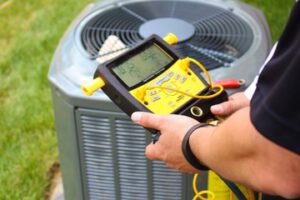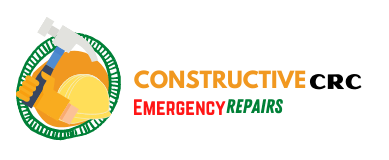When it comes to Air Conditioning Repair Woodland Hills understanding what causes your AC problems is key. It can help you determine whether an AC repair is necessary or if replacing the unit makes more sense.
If cool air isn’t flowing through your home’s vents, it could mean one or more of the following issues.
A dirty evaporator coil can be one of the biggest causes of your AC system not cooling properly. This is because the coil’s job is to absorb heat from your living space and transfer it to the refrigerant. When it’s dirty, the air conditioner will have to work harder and longer to accomplish this task, leading to more wear and tear on the system. This can lead to expensive repair bills and a shorter system life.
Dirty evaporator coils can be a result of many things, including a poorly installed air filter, dirt and dust blowing in from the outside or mold and bacteria growing on the coil. This is why cleaning your air filters on a regular basis is so important. If you don’t have a proper air filter, your home will be full of dust, pollen, pet dander and other particles that can make their way into the air conditioning unit.
You can perform a simple clean-in-place on your evap coils with a pump sprayer, professional-grade evaporator coil cleaner and a brush. The pump sprayer will provide plenty of pressure for the wand to reach into tight spaces, while the brush will help to loosen and remove any stuck on particles. If your evap coil is very dirty, a pull-and-clean may be needed.
The easiest way to check if your evaporator coil is dirty is by looking for any visible buildup of debris on the coil. This will be a dark color and can include mud, mold and dirt. The coil can also freeze if it gets too dirty, which means the air conditioner will cycle on and off constantly and won’t cool your home.
You can also check to see if your evaporator coil is dirtier than it should be by measuring the air pressure at the vents that take in room temperature air and at the air pressure on the evaporator coil. If the difference is large, this could be an indicator of a dirty coil. You can try to do a clean-in-place on your own, but it’s recommended that you have an air conditioning technician inspect and perform the necessary repair.
Dirty Compressor Coils
The air conditioner’s evaporator coil and the outdoor compressor coil are both susceptible to dirt buildup. This is especially true when these parts are neglected for extended periods of time. Dirty coils make your AC system work harder, which can lead to increased energy usage, higher repair bills and shorter unit lifespans.
A dirty evaporator coil can’t absorb your home’s warm air, which can cause the refrigerant inside to freeze. This stresses the unit and can eventually damage the compressor. The best way to prevent this from happening is to clean your evaporator coil regularly. You can do this by spraying it with a garden hose to remove loose debris, then cleaning it using household detergent or an air conditioning coil cleaner.
Your air conditioning unit’s evaporator coil can also become dirty when the condensate drain line becomes blocked with dirt or debris. To clear the blockage, shut off the power to your air conditioner and use a shop vac to suck out any dirt or debris that has accumulated on the condenser fan blade and coil.
Another common problem that can lead to air conditioning coils becoming dirty is a bad condenser relay switch or run capacitor. These components provide startup power to the compressor. Gradual capacitor failure can go unnoticed and stress the compressor and condenser fan motor windings, which may ultimately result in their failure. The best way to protect against this type of failure is by replacing the capacitor about every five years.
While it’s normal to see some variation in your energy bill, an unexpected increase can indicate a problem with your air conditioning. Dirty coils force the air conditioner to work overtime to maintain a comfortable temperature, which increases its energy consumption and leads to higher utility bills. If left untreated, a minor coil problem can quickly turn into an expensive one that requires a system replacement. This is why it’s so important to stay on top of your air conditioning maintenance schedule.
Low Coolant Levels
Coolant is used to pull heat away from the engine, so if your coolant levels are low, the engine could overheat. Fortunately, most modern vehicles have an automatic cut-off feature when the engine overheats to avoid significant damage. Still, if your vehicle doesn’t have this feature, you will need to stop driving until the engine is cooled enough to restart. The best way to check the coolant level is to open your car’s hood and observe the radiator cap or overflow reservoir. This is typically located near the engine and has a picture of a radiator and maximum and minimum marks on its side. You can also use a dipstick to measure the coolant level in the reservoir.
If the coolant is low, it is possible that there is a leak in the cooling system. The coolant tank, radiator, hoses, and other parts can all wear out over time and cause liquid to leak or evaporate. The radiator hoses in particular are exposed to hot coolant whenever the engine is running, so they will eventually wear out and break. When this happens, it’s important to replace the worn hoses before they crack or burst and start leaking coolant on the road.
One of the worst things that can happen when your coolant levels are low is that you may blow the head gasket on the engine block. This can cause significant engine damage that will cost you a lot of money to fix. A few telltale signs that your engine is about to blow a head gasket include smoke coming from the engine or exhaust, a loss of power, and engine banging sounds.
Another way that you might notice a problem with your coolant is if your heater doesn’t work properly. The heater in your vehicle uses the same coolant that feeds the engine, so if it isn’t working as it should, this can indicate low coolant levels.
You can try to drive with low coolant for a short period of time, but this is not recommended. If you do, be sure to pay close attention to your temperature gauge and make frequent stops for more coolant. You should also check your radiator hoses frequently to be certain that they are not wearing out or have loose clamps.
Warm Air From Vents
When an AC is working properly, it should provide cool air to every room of the house. Several things can cause this air flow to be blocked, from dirty air filters to leaking ducts. Fortunately, most of these problems are easy to fix.
Changing the thermostat setting from “heat” to “cool” can often solve this issue, since doing so will let your compressor cycle on and off as needed to keep your home cool. Occasionally, it’s easy to change this setting by accident during cleaning or when kids are playing around the thermostat.
If you’re still feeling warm air from the vents, check that your return and supply vents are open and free of obstructions. Make sure nothing is piled on top of the vents, like furniture or boxes, and that there are no holes or cracks in your ductwork that could be letting outside air in (and blowing out cooled air).
Another common reason for AC vents to start blowing warm air is low refrigerant levels. Without enough refrigerant, the evaporator coil can’t expand as needed to create cold air. A professional can check your refrigerant levels and re-fill them to the proper amount as part of an AC repair service.
A blown fuse can interrupt power to the air conditioning unit, which causes the motor to stop running and produce warm air as it tries to continue cooling the home. This is usually an easy fix, though it’s best to have a professional examine the fuse and wiring for any damage or signs of corrosion.
In addition to checking the refrigerant levels, a professional can also inspect and clean the air conditioner unit surroundings. It’s important to give the unit at least two feet of clearance to function properly. Plants growing too close, loose yard debris, or rodent nests in the area can all interfere with proper air flow and cause an AC to overwork. An experienced professional can easily take care of these issues to get your system back up and running.





 The roofing industry has always had jobs for skilled roofers who may specialize in one area or many different aspects of roof maintenance and repair. Roofers
The roofing industry has always had jobs for skilled roofers who may specialize in one area or many different aspects of roof maintenance and repair. Roofers 
